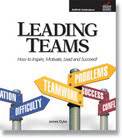The volatility of our times is increasingly confronting the modern workforce with unprecedented challenges, change, and stress. Workers today are faced with the difficulty of performing adequately in their jobs while also forced to deal with added emotional pressures from shifting work environments, forced adaptation, and unanticipated demands. This has created a situation where high emotional intelligence and resilient mental health is increasingly important to even the average worker. Fortunately, new ideas and tools have emerged from recent research to equip people for more effective management of these challenges.
Studies in the areas of neuroscience, trauma care, and attachment theory have given theorists and therapists a better understanding of how we humans react to various degrees of stress in our lives. The work of Dr. Peter Levine, in particular, led him to develop the concept of “Somatic Healing,” which taps into these disciplines and areas of study. Other researchers have built on his work, adopting the concept that, over time, we develop three primary “selves” and use them (mostly unconsciously) to cope with the different demands we face in life, especially those that are accompanied with stress and the damaging effects it creates. This post presents a number of ideas reported in key articles published in the Harvard Business Review, by authors Tony Schwartz, Emily Pines, and Kashera Booker.
The 3 Selves—What They Are and What They Do
1. The Child Self
The Child Self appears as soon as we’re born. It’s the most playful, curious, and wonder-filled of the three. It’s also the most under-resourced: immature, helpless, vulnerable, easily threatened, and easily overwhelmed. The Child Self reflects the reality of the child’s world. Children function with limited ability and autonomy, relying on more powerful and capable adults to take care of them. But as we age and mature, this experience of vulnerability becomes less and less desirable, and so we form a second self to help us cope with the challenges, demands, and threats we face.
2. The Defender Self
The Defender Self is like a psychological bodyguard—aware, focused, and productive; aimed at surviving and winning, and even, at times, is supportive and compassionate. It’s what a growing child needs, in order to possess a greater sense of autonomy and capability.
The Defender Self can draw on any number of reactions in order to protect us from those early child’s fears of vulnerability, helplessness, or unworthiness. If you have ever been “triggered” by an emotionally-charged event, you likely experienced one of them: defensiveness, anger, blaming, rationalizing, emotional repression, or even self-criticism. These defense mechanisms are part of the way we react to trauma and protect ourselves psychologically.
But psychologists caution us that this Self is hyper-vigilant and super reactive to any perceived threats. It’s this Self that drives the “fight or flight” state that fuels our impulsive, reactive, illogical, and often counter-productive responses. In that state, our logical and clear-headed thinking gives way to narrow-minded impulse. One observer puts it this way, “Reactivity replaces deliberation. Threat can help mobilize our attention, but when it comes to solving complex problems that have multiple variables, we need our highest cognitive resources.” In other words, we need a more mature and stable frame of mind.
3. The Adult Self
Our most capable and mature self is our Adult Self. When we inhabit our Adult Self we are able to access those higher thinking capacities that enable us to grasp a wider field of awareness, ideas, and points-of-view. It’s also in the Adult Self that we are able to take charge of our emotional responses; address challenges and threats with clear-headedness; and thus make it safe for our Child Self to express its best qualities of curiosity, creativity, spontaneity, generosity, and compassion.
The Adult Self equips us for success in the workplace. It supports high levels of decision-making, problem-solving, conflict resolution, collaboration, and creativity. One of its most helpful strengths is to enable us to understand and validate another person’s unique experience and perspective nonjudgmentally—to be empathetic in the truest sense.
The Adult Self is also capable of observing our emotional state with mature awareness and objectivity. It can add understanding to strong emotions, and treat them with compassion and insight. It can challenge the often distorted thinking that arises with strong emotions, and provide a clearer, calmer frame of thought. That can be soothing and reassuring to our hyperactive Defender Self. It can also prevent us from impulsively “acting out” on those strong emotions with destructive and counterproductive behavior.
In short, the Adult Self is just what we need when the heat is on and stress is at its highest levels. But it can be ironically difficult to access our Adult Self during those times when we need it most! The experts recommend that we begin that process with a simple first step of awareness.
1. Identify the “self” that you are currently inhabiting. For most of us, under stress, it is the Defender Self. Sadly, researchers have concluded that the majority of people inhabit their Defender Self… as a matter of course. The authors I noted previously tell us that the Defender Self…
”…ultimately becomes the dominant player in our lives. It doesn’t show up just when we feel threatened and we move into fight-or-flight. Rather, it’s the primary self we inhabit for most of our lives. Think of it as the persona we wear in the world.”
The main challenge for many of us, therefore, is to become aware of what we generally experience unconsciously—including the often counter-productive responses that follow.
2. Take steps to calm yourself and shift into self-regulation. A number of techniques can be useful in this step:
- “Freezing”—deliberately NOT doing or saying anything, in order to avoid impulsively acting out, which then gives you the opportunity to start the calming process.
- Self-talk that reinforces your mindfulness—“Slow down, self!”
- Deep, calming breaths that remove the stress hormone cortisol—in as quickly as a minute or so; and
- Movement of some kind—any burst of physical activity that raises the heart rate and respiration (climbing stairs; brisk walking; even a few jumping jacks).
Up Close and Personal
One of my executive coaching clients struggled with a lack of impulse control—a habit he had developed over most of his life, including as a professional. He was further hampered with a tendency to catastrophize—to imagine the worst case scenario, regardless of the facts or true nature of the situation. Coworkers found him extremely difficult to work with, as did his boss! I taught him the “S.T.O.P.” method, to help him address his pattern of counterproductive “acting out.” This method is a simple four-step approach to impulse control:
S = STOP – Freeze. Don’t say or do anything.
T = TAKE A BREATH. Take calming breaths and de-escalate your emotionality.
O = OBSERVE CAREFULLY. Externally, what is happening in the situation and in other people. Internally, what is happening inside YOU both mentally and emotionally.
P = PROCEED WITH CAUTION. Take appropriate action after exercising better management of your thoughts and feelings.
His experience with this method was what you might expect for someone trying to reverse years of poor impulse control. In one of our coaching sessions, he blurted out, “This is HARD!” But as difficult as this process might be, it is a necessary precursor to the steps that follow.
3. Once you feel calmer and more able to reflect, mindfully step into your Adult Self. This allows you to take the time you need to…
- Step away from strong emotions and prevent impulsive behavior
- Avoid employing counter-productive defense mechanisms
- Engage thought processes more objectively and constructively
4. With our Adult Self in charge, we can then step back and gain a different perspective—one that is broader and more realistic. I often tell my seminar participants: “Emotional Intelligence is all in your head.” What I’m referring to is the powerful role our thoughts and beliefs play in the emotions we experience and the responses we make as a result. The challenge we often face is to distinguish between a fact or true belief and a false or subjective perception. Under stress, it becomes almost impossible to tear ourselves away from our impulsive and panic-driven thinking in order to gain a clear-headed, objective view of our situation. It’s a classic tug-of-war between our Defender Self and our Adult Self.
Through my many years working in the recovery movement, I have discovered that the Adult Self gives us the ability to view our situation with a third-person perspective. We are able to see everything more clearly, with greater understanding and also greater compassion. We are able to accept ourselves more fully—including making peace with our limitations, weaknesses, mistakes, and failures. That makes us a lot less defensive, and better able to interact with colleagues and collaborators in the workplace.
Higher levels of emotional maturity also equip us to respond more constructively to challenges of any sort—especially by tapping into the creativity, wonder, openness, and empathy of our Child Self. This enables us to continue to learn, grow, develop, and explore new ideas and achieve new successes—without the impulsive defense against change or the rigidity of dogma.
So…what “self” are you inhabiting today? And where do you need the strengths of each one? Executive coaching can help. Give me a call—I’ll be happy to explain how coaching sessions can help you overcome your obstacles to personal growth and success!
Until next time… Yours for better leaders and better organizations,
Dr. Jim Dyke – “The Boss Doctor” ™ helping you to BE a better boss and to HAVE a better boss!







